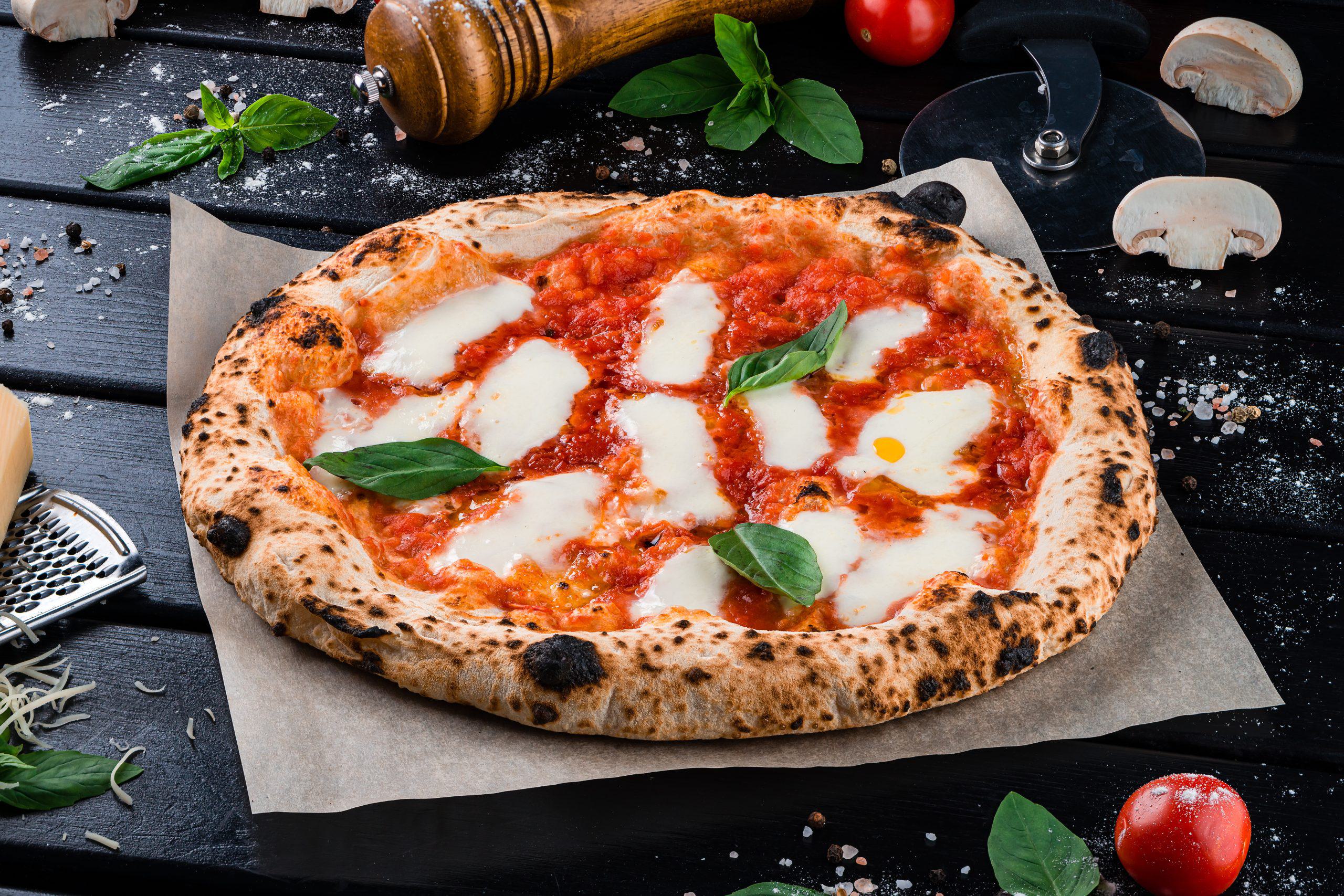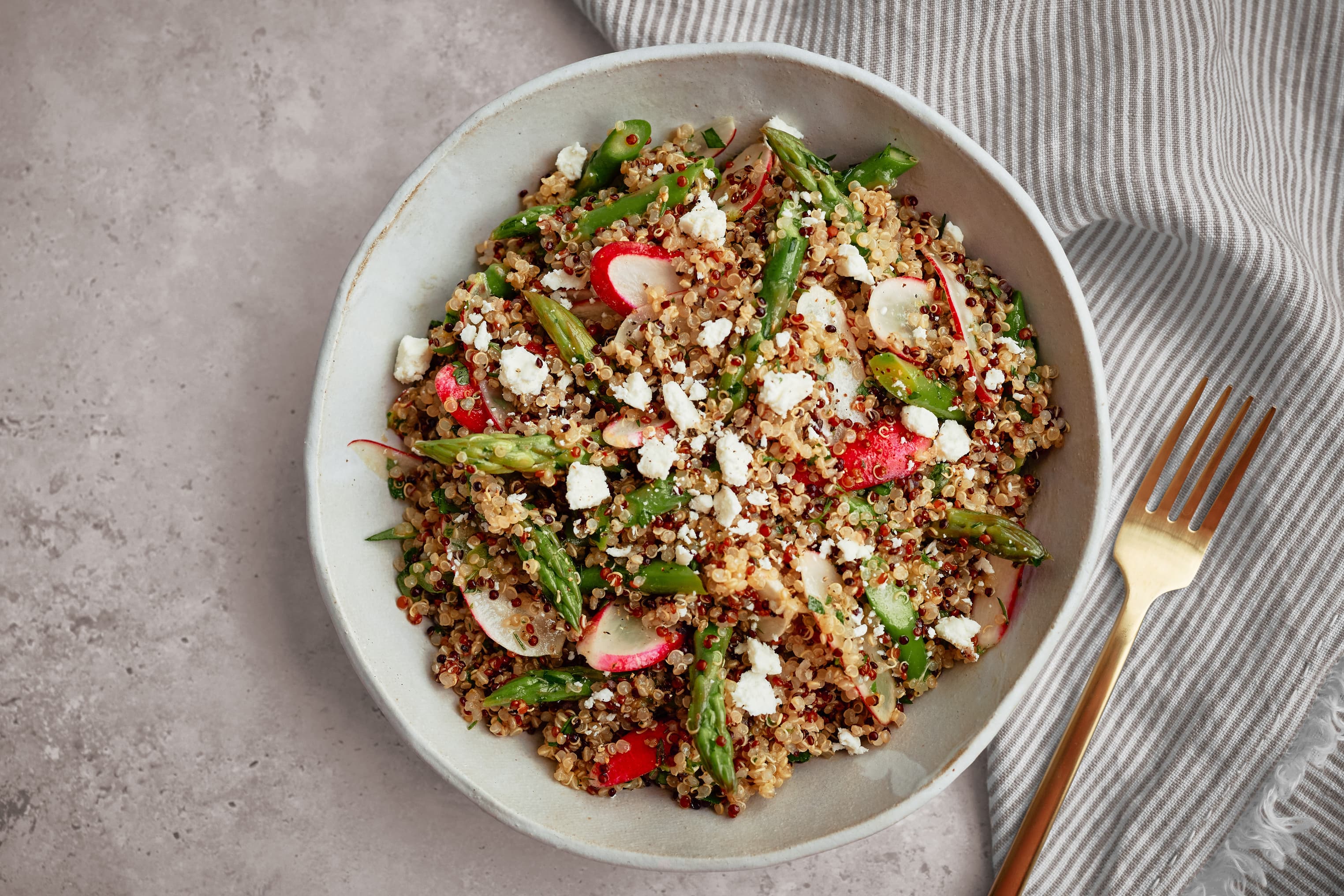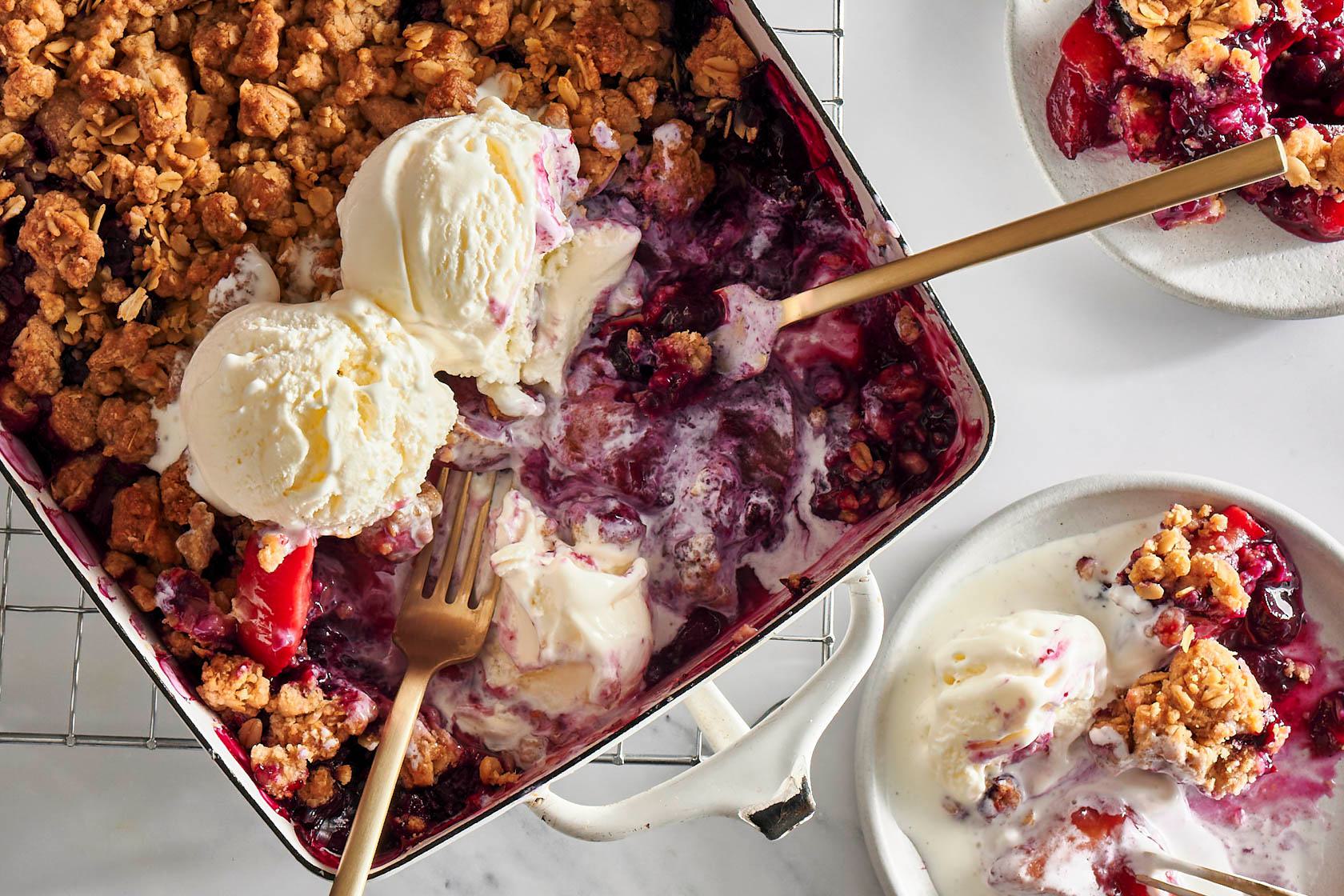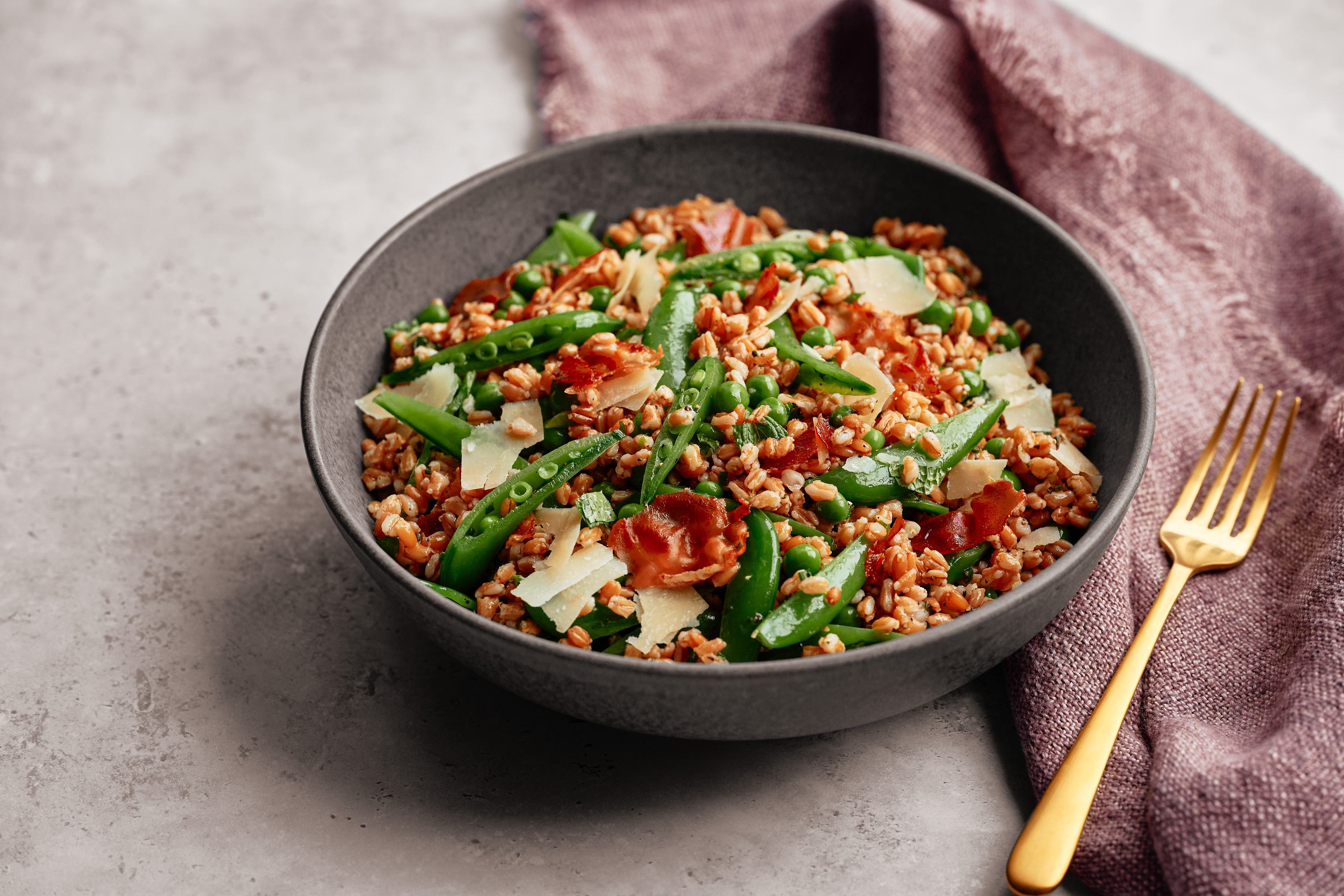


Did you know the average household in the United States loses $1,500 each year to food waste? It’s true: 40% of the food in our country goes uneaten, and the resulting greenhouse gas emissions are the equivalent of driving 1 million fully loaded semi-trucks across the country*.
At Bob’s Red Mill, we’re passionate about sustainability, and reducing food waste is a top priority. Fortunately, we have a not-so-secret weapon in the fight against food waste: 700 employee owners! Thanks to their on-the-floor observations and ideas, we’ve saved hundreds of thousands of pounds of food from landfills—and we have big plans for the future. Here’s just a few of our wins thus far:
Joined the U.S. Food Waste Pact in 2023—the first food manufacturer to do so
Rescued 335,875 lbs of food waste on packaging lines in 2024
Cut food waste by 70% on a production line, thanks to one employee-owner’s idea during our companywide Food Reduction Challenge—learn more here
In addition:
100% of Bob’s food waste is upcycled regionally at our partner farm as nutritious feed for dairy cows, to make goods like cheese
Our goal for 2025 is to cut Oatmeal Cups waste by 50%
All of this food ending up in the landfill is bad enough, but look more closely and you’ll see the additional cost of food waste: the resources, energy and dollars spent to grow, package and ship this food are also wasted! These resources include everything from water and fertilizer to the hours—and seeds—spent planting and harvesting said food. Plus, every step of the process generates greenhouse gases.
DID YOU KNOW? Food waste costs the nation $310 billion annually, and 48% of waste happens at home. Here’s how you can help.
While we’re proud to do our part, a staggering 48% of food waste occurs in the home. Whether you’re already food waste conscious or just getting started, we have five easy (and tasty) ways you can join the fight and trim the fat from your grocery bill.

It’s a fact: If you fail to plan, you are planning to fail (thanks, Benjamin Franklin). One of the best ways to avoid food waste is to make a list of all the meals you plan to cook for the week. Here's how I do it:
Shop Your Kitchen: First stop—your own pantry, fridge and freezer! It’s so easy to be swept away by amazing new recipes on TikTok and buy all new ingredients, when you probably already have food that needs to be eaten now (left over from another shiny new recipe you didn’t repeat).
Look for Sales: Check your local grocery store ads to see what’s on special this week that will play well with what you already have on hand.
Plot Your Meals: I tend to keep a running list for the week of dinners, as well as ideas for breakfast (lunch is generally dinner leftovers). Make sure to check your calendar—if you’ll be out during the week and won’t have time to cook, plan accordingly.
Make a Grocery List—and Stick to It: Keep your eyes on your list, and off the tempting in-store displays! Or get your groceries delivered to keep temptation at bay.
DID YOU KNOW? 16% of the United States’ freshwater supply—16.2 trillion gallons—goes down the drain each year, used to grow food that goes uneaten.

I call this the Taco Bell Principle: at Taco Bell, they use the same ingredients in multiple ways, to offer different experiences for their customers. For you, this could mean cooking up a single batch of quinoa and using some to create a side dish, tossing some into a green salad, and stirring the rest into a pot of soup. It’s an easy way to eat what you have without boring your taste buds.
You can’t eat it if you can’t see it! Create “use-it-up" shelves in your pantry and refrigerator and put items near their best-by date front and center to keep them front-of-mind.
When all else fails, freeze it! Whether that’s individual portions of soup or other leftovers, eggs (find out how here), or blending fresh herbs with a little water and oil and freezing them in ice cube trays, you can easily extend the life of your food—and enhance your future meals.
DID YOU KNOW? The amount of food we waste takes up 140 million acres of farmland—that’s as much land as California and New York combined.
You can be the best meal planner in the world—and have all your ingredients organized by best-by date—but there are times when that produce lingered until they were past their prime. Fortunately, we have some “use-it up” recipes you can keep in your back pocket.

Our delightful Sweep-the-Kitchen Fruit Crumble is "crunchy" in two ways: it has a crispy oat topping, and it's the perfect way to use up any fruit—fresh or frozen—before it goes to waste. Old Fashioned Rolled Oats are mixed with our premium Unbleached White All-Purpose Flour, butter and sugar to create a crumble with the perfect texture. We used a mixture of peaches, plums and blueberries, but apples, pears and berries also work well.
While “imperfect” fruit may not be the most visually appealing, they sure taste delicious! We created this Stone Fruit Crisp with our friends at Imperfect Produce, and the result is an easy, tasty dessert topped with oats and bubbling with warm spices.
Soup is another easy and delicious way to use up produce, proteins and herbs. I love to chop up leftovers from veggie trays and other strays from the bottom of my vegetable crisper (#ProTip: if you have onions, celery and carrots, start there) and sauté them with a little oil. Then I cover it all with broth or water and simmer with salt and other flavorings until tender, before blending everything up. Topped with a little sour cream or yogurt (or crispy bacon, or browned sausage, or grated cheese), it’s a tasty way to enjoy saving food and money.
But, if you’re not quite ready to freestyle like that, no worries! This Tortilla Soup with Red Lentils is packed with veggies, Red Lentils and spices. Use it as a guideline and substitute whatever you have on hand if needed!

Another food waste favorite is this delectable Chicken Pot Pie Soup, made thick and creamy with our Organic Unbleached White All-Purpose Flour. Were you overcome at Costco and grabbed two rotisserie chickens? You can use the one you didn’t snack on in the car. This is another veggie-packed recipe that is super forgiving when it comes to ingredient swaps!
One food waste hack you may be sleeping on? Pizza. You can put pretty much anything on a pizza, from thinly sliced potatoes or zucchini to pears and crumbled feta. Just look through your fridge and you’ll have a gourmet-level delight in no time, and you won't have to wait for the delivery guy. Our favorite recipe for weeknight pizza is our Everyday Pizza Dough. Made with our incredible 00 Flour, it makes two delightfully chewy, crispy pizzas, without the overnight rise. The best part? Our 00 Flour can also be used to make fresh pasta, baked goods like cinnamon rolls, and more.

Finally, I bring you grain salads! These build-you-own-adventure taste sensations start with hearty grains, and end with a cleaned-out fridge and cupboard. Or, if you prefer to start with a recipe, we love this Italian Chopped Farro Salad, made with Organic Farro, fresh and pickled veggies, chickpeas, cured meats and cubed cheese.
Every time we plan a meal, repurpose leftovers, or turn “almost gone” into “absolutely delicious,” we’re doing more than saving food—we’re honoring the work that went into growing it, and protecting the resources that nourish us all. At Bob’s Red Mill, we believe that homemade food has the power to bring people together—and with a little creativity, it can help build a better world, too.
Together, bite by bite, we can waste less, share more and care for the planet we call home!
* “The Hidden Cost of Food Waste.” World Wildlife Fund.
Additional data from ReFed.